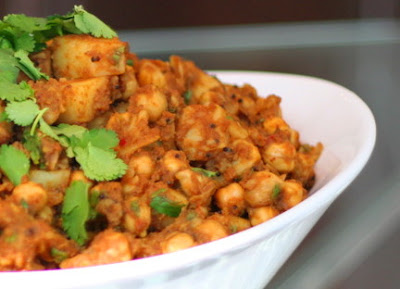

Although it’s only May, Chicago is sweltering. Whether the heat should be attributed to global warming or not, it’s time to start the summer culinary season. Besides ice cream and watermelon, I cannot think of a more satisfying summer treat than gazpacho.
I was shocked to learn that this cold tomato soup did not originally have tomatoes. It originated in Andalusia, a southern region of Spain. While its provenance is unclear, many believe it was created during the Middle Ages in the heavily Muslim region of Al-Andalus (which is modern day Andalusia).
The soup is believed to have originally contained only stale bread, garlic, olive oil and vinegar. Tomatoes and peppers were only introduced when they arrived from the New World after 1492. Gazpacho, described by some as a liquid salad, was introduced to Northern Spain in the nineteenth century by Eugenia de Montijo, the wife of the French Emperor Napoleon III. It experienced a surge in popularity in the United States during the 1940s and 1950s as blenders became common kitchen appliances.
Unlike many modern North American gazpacho recipes, this one includes bread, which thickens the soup and gives it added substance. However, it can be without bread (or with gluten free bread) for the gluten allergic.
I was shocked to learn that this cold tomato soup did not originally have tomatoes. It originated in Andalusia, a southern region of Spain. While its provenance is unclear, many believe it was created during the Middle Ages in the heavily Muslim region of Al-Andalus (which is modern day Andalusia).
The soup is believed to have originally contained only stale bread, garlic, olive oil and vinegar. Tomatoes and peppers were only introduced when they arrived from the New World after 1492. Gazpacho, described by some as a liquid salad, was introduced to Northern Spain in the nineteenth century by Eugenia de Montijo, the wife of the French Emperor Napoleon III. It experienced a surge in popularity in the United States during the 1940s and 1950s as blenders became common kitchen appliances.
Unlike many modern North American gazpacho recipes, this one includes bread, which thickens the soup and gives it added substance. However, it can be without bread (or with gluten free bread) for the gluten allergic.
Serves 6
Ingredients
2 inches of baguette, crust removed
3 cups tomato juice
1 lime, juiced
4 tablespoons balsamic vinegar
4 tablespoons olive oil
1 teaspoon ground cumin
1 1/2 teaspoons kosher salt
1 teaspoon freshly ground pepper
4 garlic cloves
3 roma tomatoes, seeded and sliced
1 cup roasted red peppers
1 cucumber, peeled, seeded, in chunks
1/3 bunch fresh cilantro (stalks removed)
Tabasco to taste
1 avocado, for garnish
cilantro, for garnish
Directions
1. Slice off a 2-inch piece of baguette. Remove the crust. Soak the bread in water for one minute and then squeeze dry. Set aside.
2. Liquefy all the ingredients (except the Tabasco and avocado) in a blender. You will have to do this in batches.
3. Add Tabasco to taste. Add additional salt and pepper if desired.
4. Chill soup for at least 3 hours or overnight.
5. Serve with sliced avocado and cilantro leaves as garnish.
Ingredients
2 inches of baguette, crust removed
3 cups tomato juice
1 lime, juiced
4 tablespoons balsamic vinegar
4 tablespoons olive oil
1 teaspoon ground cumin
1 1/2 teaspoons kosher salt
1 teaspoon freshly ground pepper
4 garlic cloves
3 roma tomatoes, seeded and sliced
1 cup roasted red peppers
1 cucumber, peeled, seeded, in chunks
1/3 bunch fresh cilantro (stalks removed)
Tabasco to taste
1 avocado, for garnish
cilantro, for garnish
Directions
1. Slice off a 2-inch piece of baguette. Remove the crust. Soak the bread in water for one minute and then squeeze dry. Set aside.
2. Liquefy all the ingredients (except the Tabasco and avocado) in a blender. You will have to do this in batches.
3. Add Tabasco to taste. Add additional salt and pepper if desired.
4. Chill soup for at least 3 hours or overnight.
5. Serve with sliced avocado and cilantro leaves as garnish.










